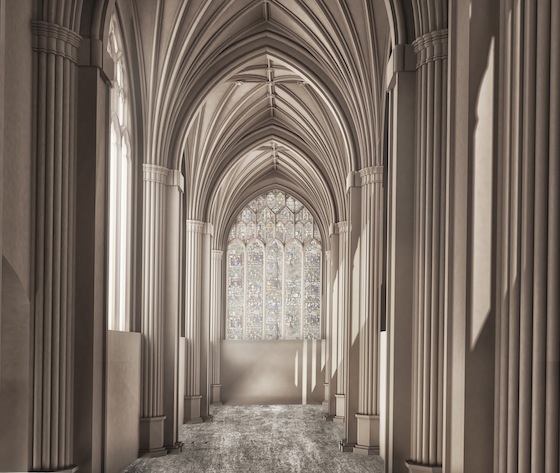Today, all that remains of the Church of the Annunciation – where Richard III’s body was put on display after the Battle of Bosworth – are two arches in DMU’s Hawthorn Building.

Now the lost Chantry Chapel of St Mary of the Annunciation has been recreated digitally by Masters students at DMU who are researching medieval architectural design methods.
DMU’s acclaimed Digital Building Heritage Group is now looking for medieval English specialists who can help develop further the re-creation of this important building.
The church, which was destroyed during the Reformation, once stood in the Newarke precinct of the medieval city of Leicester. It was inside this church that Richard III’s body was laid on display for two days after the Battle of Bosworth by Henry Tudor.
MA students used a mixture of documentary evidence, maps and drawings to study the processes used by medieval masons. They also went on field trips to examine examples of similar buildings of the same age in the area.
Their finished works were then transferred into 3D models using computer-aided design programmes. They were able to come up with a ground plan, sections and elevations of the building.
Dr Douglas Cawthorne, of DMU’s Digital Building Heritage Group, said: “Paint analysis from the surviving arches has shown they were brightly coloured and overall, the evidence suggests and small college and chantry chapel with high quality decoration and surrounding buildings.
“We would be interested in talking to artists and historians who specialise in medieval English wall painting to collaborate on developing representations of the interior surfaces of the chapel, which would have been decorated with scenes from the old and new testaments.”
The chantry chapel contained a number of Lancastrian burials, including Constance of Castile, Duchess of Lancaster who was married to John of Gaunt and Mary de Bohun, first wife of King Henry IV.
In the 16th century, one of the tombs that of Lady Mary Hervey was moved to Trinity Hospital, where it lies today.
The two arches formed part of the crypt and survived as part of the cellar of a house built on the site. It was this house which was demolished in the early part of the 20th century.
Posted on Thursday 12 March 2015